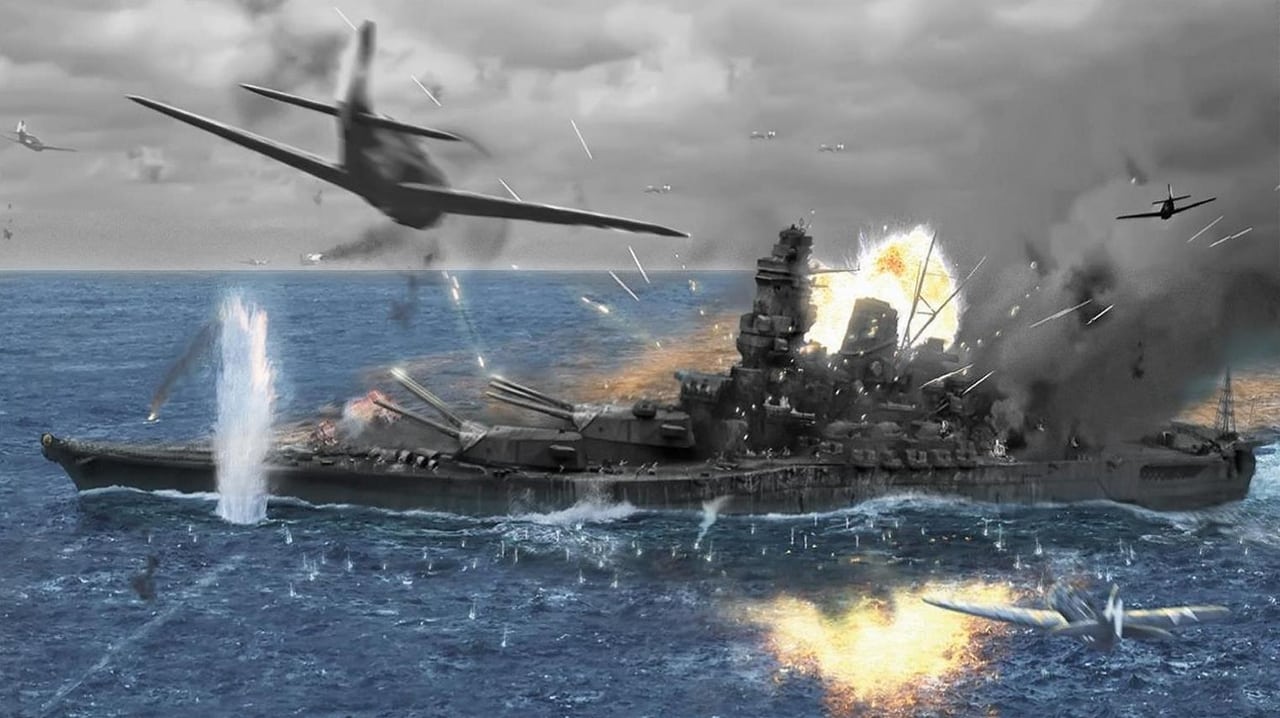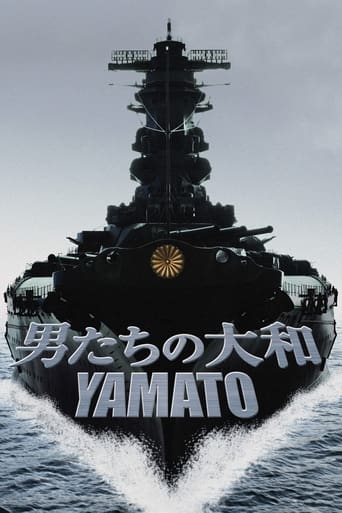IslandGuru
Who payed the critics
Diagonaldi
Very well executed
Livestonth
I am only giving this movie a 1 for the great cast, though I can't imagine what any of them were thinking. This movie was horrible
Marva-nova
Amazing worth wacthing. So good. Biased but well made with many good points.
user-623-899814
I saw this English subtitles on youtube. I have read the commentating about the non propogandic value. My own family history Latvian side has some of most brutal irony a nephew served in the uniform of the nation that had his own uncle as an inmate. That young man was old and his youngest brother yet to be born in WWII competed the last USA V USSR before the wall fell in flying competition. There were some elements the need to honor the dead. My grandmothers ashes were spread at Visby.I do have the following beefs nothing about what Japan did in China explained its all glossed over. The irony that even the Battlefield documentary series pointed out the surrendering wounded Japanese pulling the pin on hand gernades at Gaudacanal. Is not mentioned. The actions of Japan forced the bombing they scared the (exp deleted) out of.Hard to do real action full size without plans. It did also omit the fact the crew heard radio transmissions of kamikazes making final dives.Interesting piece on the Japanese mindset about WWII kind of schizophrenic about what it did. As Tejano I have com to terms with the darker sides of my Latino heritage as well. Latvian/Latino (I am a product of the US Army)
Claudio Carvalho
On April, 6th 2005, in Makurazi, Kagoshima, Makiko Uchida (Kyôka Suzuki) seeks a boat in the local fishing cooperative to take her to the latitude N30, longitude L128, where the largest, heaviest and most powerfully armed battleships ever constructed Yamato was sunk on April, 7th 1945; however, her request is denied. She meets by chance the captain Katsumi Kamio (Tatsuya Nakadai) of the fishing vessel Asukamaru and discloses that she is the stepdaughter of Officer Nagoya Uchida (Shidô Nakamura) and Kamio immediately accepts to take her in the risky journey. While traveling with Makiko and the fifteen year-old Atsuchi (Sosuke Ikematsu), Kamio recalls and discloses the story of Yamato and his close friends that served on board of the battleship until the final suicidal mission in Okinawa. When they reach the spot where Yamato was sunk, he considers that he finally reached the end of the Shōwa era."Otoko-tachi no Yamato" is a dramatic movie based on the true story of the Battleship Yamato in World War II. This film gives an approach of Japanese relationship in war totally different from the stereotype of American and European movies of this genre that usually treat Japanese soldiers as cold blood killers detached from any emotions. In "Yamato!", the Japanese military are human beings, with beloved ones, families and comradeship between them, giving more credibility to the story. However, director Junya Sato exaggerates in the melodramatic subplots and in many moments the viewer has the sensation of watching a soap-opera instead of a drama. The final battle of Yamato is engaging and one of the best moments of this film. The music score is repetitive and boring and I personally did not like it. Last but not the least, the Shōwa period mentioned by Katsumi Kamio in one of his last lines literally means, in accordance with the Wikipedia, "period of enlightened peace", or Shōwa era, is the period of Japanese history corresponding to the reign of Emperor Shōwa (Hirohito), from December 25th, 1926 to January 7th, 1989. My vote is seven.Title (Brazil): "Yamato"
Mark
I guess the ambition of this film is to show the personal drama taking place alongside the big drama of the last ditch demise of the great "Yamato", and from this point of view the film performs well but expectable. There is the tragedy of young lives being lost for a lost cause, the psychological wounds of the survivors that never heals. There's also the mandatory journey to the spot of the disaster made on an anniversary by one of the survivors and a daughter to another, maybe inspired by J. Cameron's "Titanic". Factually, though, the film is a failure. It would of course be impossible to make a replica of the ship, so it has been recreated digitally, and to excellent effect in the few scenes you actually view the whole ship, or most of it, making its way through the seas. Those moments alone are worth the price of the ticket. But the budget didn't cover much more than that. The mock-up of certain parts of the ship look just like mock-up, we don't even get to know about one light cruiser and several destroyers that followed "Yamato" to disaster (most of them were also sunk) and we don't see one single US ship (aircraft from at least 12 American aircraft carriers participated in fending off the Japanese). What's worse, we are not told how the battle developed or what tactics were used by the Japanese task force nor by the US air squadrons. The great battleship was eventually sunk after being hit by many torpedoes and several big, armor-piercing bombs, but most of what we see is low flying US aircraft strafing the crew and hitting the decks with small caliber ordnance, causing incredible carnage. The strafing did take place on several occasions during the day, the ship was also hit by small rockets from F4U Corsair fighters, but it all had marginal effect. The huge 456 mm guns are seen firing away towards the approaching aircraft, and while this in fact did happen, one couldn't stay exposed on deck, as the enormous blast would probably kill or at least severely injure you, so crew were forbidden on the outside on such occasions. All in all, the never-ending screams of dying seamen don't make up for the lack of most of other angles of this last major battle of WWII. All in all, some 3000 Japanese lives were lost on the "Yamato" alone, plus more than a thousand more on the accompanying ships, without disturbing the US Okinawa operations in any way. Some figures are mentioned in the film but the tragedy of this sacrifice in not fully pointed out. During the day the US lost 12 airmen and 10 airplanes.
Weiguo Zhong
This is not the first time that I saw the sunk of Yamoto in Nippon movie. The precedent movie are "Rengo kantai" (1981), or additionally, some movie relative with Nippon naviation or 'Zero' fighter. With its poor battle result, the Yamoto was not more than a symbol of power, which main function was to satisfy people's adoration need, similar with the enthusiasm to sumotori of Japanese. Though it praised the braveness of soldiers, it can't bear comparison with "Sink the Bismarck" (1960), in which the defeated Germany wined British's respect (It's ridiculous when a US veteran present his awedness to rival in the start and final of "Lorelei: The Witch of the Pacific Ocean" (2005)). But this is not a historically narrative film. It also abandon the scanty criticism tradition of Japanese war movie before 90's. The tradition of vagueness of moral sense in Japanese movie is still there. No context was given to transmit the information about the cause to this tragedy, without which the sense of sacrifice to protect others is so pale. The script seemed to cater to the current civil circumstance. So this is a real "anniversary" movie within a predefined frame. The cast were very good. Despite the unnaturalness of the plot corresponding to modern society, Tatsuya Nakadai is still my favorite actor. It's a pity that Japanese movie is losing its classic art orientation and international influence after the fade of masters directors. The 3D effect is just so so, light is somewhat dim, and the color is always monotonously the hull's hue. Fortunately, the wave is no longer that appeared in old movie adopt the ship model. Music is better than "Lorelei: The Witch of the Pacific Ocean".

